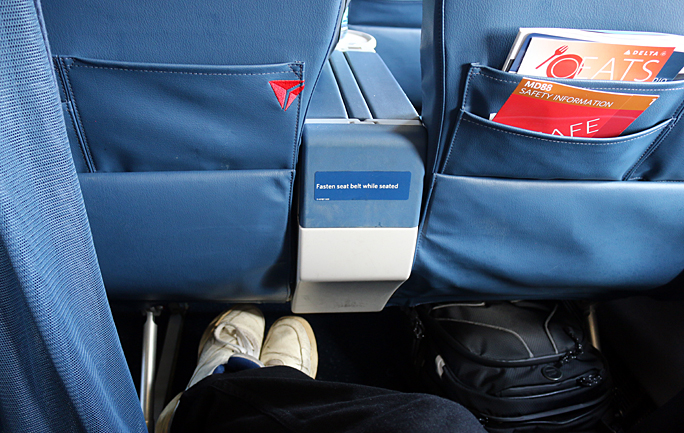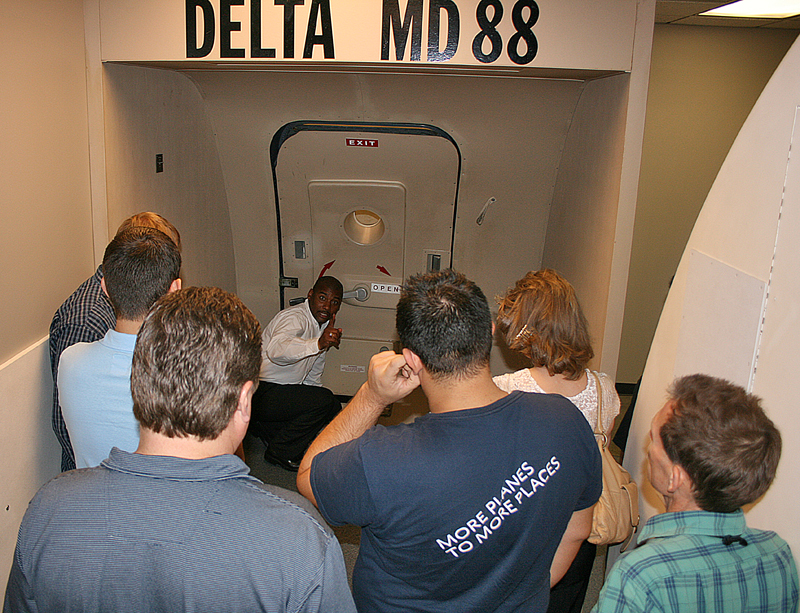The fleet of McDonnell Douglas aircraft comprised of MD-88 and MD-90 airplanes — which are also colloquially known as mad dogs by frequent fliers and aviation enthusiasts — of Delta Air Lines are being retired earlier than previously planned effective as of June of 2020 because of the current 2019 Novel Coronavirus pandemic…
Delta Air Lines to Retire Its Entire McDonnell Douglas Fleet of Aircraft in June of 2020

…so if you want to travel on what is generally considered workhorses of the fleet of airplanes which are operated by Delta Air Lines across its domestic network of flights in the United States, you only have through sometime next month to do so.
The retirement of the aircraft is only part of an effort by Delta Air Lines to reduce its capacity systemwide due to a substantial drop in demand as a result of the pandemic. The overall active fleet of Delta Air Lines had already been slashed by approximately 50 percent, as greater than 600 mainline and regional aircraft had been idled in the last two months and parked in various places; while other older and less efficient airplanes are also being considered for retirement earlier than scheduled.
The fleet of MD-88 aircraft was previously set to retire by the end of 2020, according to this article written by Michael Thomas of Delta News Hub. As of February of 2020 — prior to the reduction of the fleet of airplanes as a result of the pandemic — 47 MD-88 airplanes and 29 MD-90 airplanes were still in service for Delta Air Lines.

Coincidentally, the official announcement of retiring the fleet of McDonnell Douglas aircraft of MD-88 and MD-90 airplanes occurred exactly 13 years after Delta Air Lines officially emerged from bankruptcy protection back on Monday, April 30, 2007. On that day, Gerald Grinstein — who was then the chief executive officer of Delta Air Lines — said that “what currently costs approximately US$75,000.00 per month for maintenance and upkeep of the MD-88 fleet used to cost approximately US$225,000.00 per month” and that “Delta Air Lines must maintain its balance sheet — it must not be over-extended. It must strive for best-in-class cost structure. It must simplify its aircraft fleet, and over the years, Delta Air Lines will replace its 767 and MD-88 series over the coming years, and it has recently ordered 737-700 and 777 series aircraft.”
Few Bad Seats Aboard the Airplane
I have flown as a passenger aboard both the MD-88 and MD-90 aircraft which were operated by Delta Air Lines countless times — and there were few bad seats aboard the airplane.

For example, seat 33A is a window seat in the exit row which had no seat in front of it — meaning extra leg room which rivaled a seat in the premium class cabin.
More information pertaining to my experience with seat 33A is documented in this article, which I wrote on Sunday, December 6, 2015.

Seats located in what was called the Economy Comfort section of the aircraft were fairly comfortable and offered ample leg room. The seat in which I sat in the photograph shown above was during a flight operated by Delta Air Lines from Washington to Atlanta as part of my journey to Nairobi for a safari in Kenya.
The worst seats aboard both models of aircraft were generally in the last few rows in the rear, where the engines are located. The experience was quite noisy. Because the engines were located at the rear on either side of the aircraft, seats which are located in the front of the aircraft were among the quietest of any in commercial aviation — although the experience of being a passenger aboard an MD-90 airplane is thought to be quieter overall than that of the MD-88 airplane.
The Differences Between the MD-88 and MD-90 Aircraft
At first glance, the fleet of McDonnell Douglas aircraft of MD-88 and MD-90 airplanes appear to be identical — but with up to 160 seats aboard it, the MD-90 airplane is longer than the MD-88 airplane, whose maximum capacity is 149 seats. More seats result in more passengers, which meant that three members of the flight crew were necessary for flights which were operated by Delta Air Lines with the MD-88 aircraft — whereas four members of the flight crew were usually aboard the MD-90 aircraft.

The engines of both aircraft are different. In the photograph shown above, the airplane whose registration number is N936DN is a McDonnell Douglas MD-90-30 aircraft; whereas the airplane whose registration number is N953DL is a McDonnell Douglas MD-88 aircraft. Notice the difference in the engines: the engine of the latter appears longer than that of the former.
Also, take a look at the exits over the wings of both airplanes. Note that only one window is between both emergency exits of the MD-88 aircraft; whereas two windows are between both emergency exits of the MD-90 aircraft.
A distinctive feature of the interior seating of the economy class cabin aboard both airplanes is the configuration of two seats on one side — which were more popular with passengers due to no middle seat — and three seats on the other side. The difference is that the bank of three seats was typically on the right side on the MD-90 aircraft and on the left side on the MD-88 aircraft.
The MD-90 also had up to 900 nautical miles of longer flight range than the MD-88; so it was used on flight routes with a farther distance between the origination airport and destination airport.
Other minor differences also marked the distinction between the two otherwise seemingly identical models of airplanes which were manufactured by McDonnell Douglas prior to its merger with Boeing in 1997.

Just for fun, the photograph shown above compares the size of a McDonnell Douglas DC-9-51 airplane — which is similar in size to an MD-88 airplane — to that of a Boeing 747-400 airplane. You can view more photographs of the comparison between both airplanes in this article which I wrote on Sunday, May 22, 2016.
McDonnell Douglas was formed in 1967 by the merger of McDonnell Aircraft and the Douglas Aircraft Company, which were respectively named after their founders of James Smith McDonnell and Donald Wills Douglas.
Summary

My vast experience of being a passenger aboard both airplanes was good overall. The experience of being upgraded to the premium class cabin was nice — but because the flight routes were generally shorter domestic flight routes, it did not compare to the premium class experience aboard larger aircraft on longer flight routes.
I will miss the fleet of McDonnell Douglas aircraft comprised of MD-88 and MD-90 airplanes once they are taken out of service for the last time with Delta Air Lines…

…and I suppose I will no longer need to know how to escape from a McDonnell Douglas MD-88 aircraft in the event of an emergency, as I learned how to do at the world headquarters of Delta Air Lines back in 2009 and 2010. I intend to find photographs pertaining to that and documenting the experience in a future article…
All photographs ©2007, ©2009, ©2015, and ©2016 by Brian Cohen.